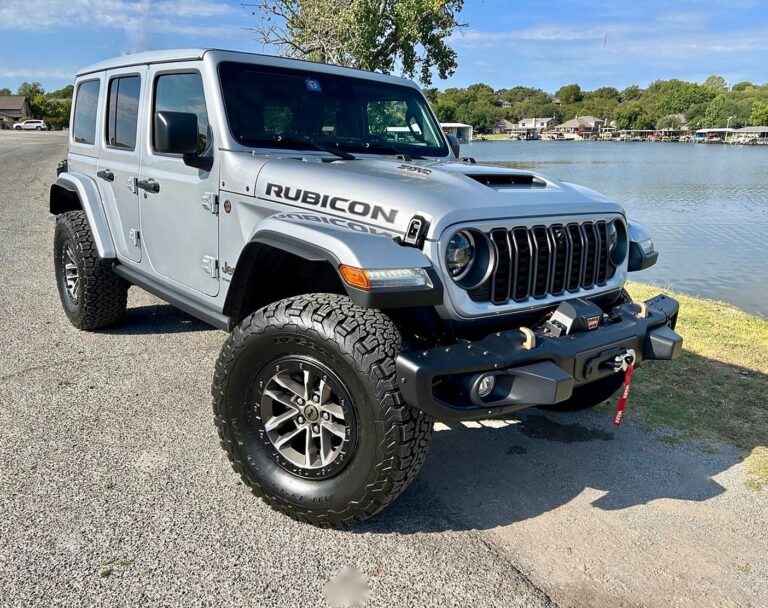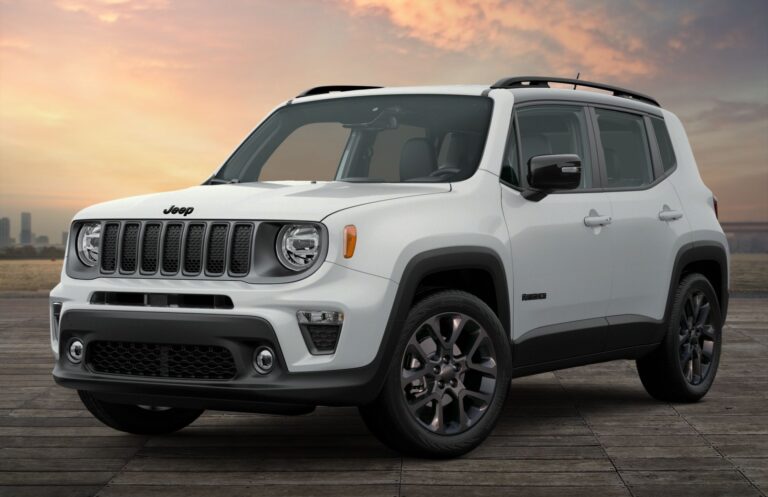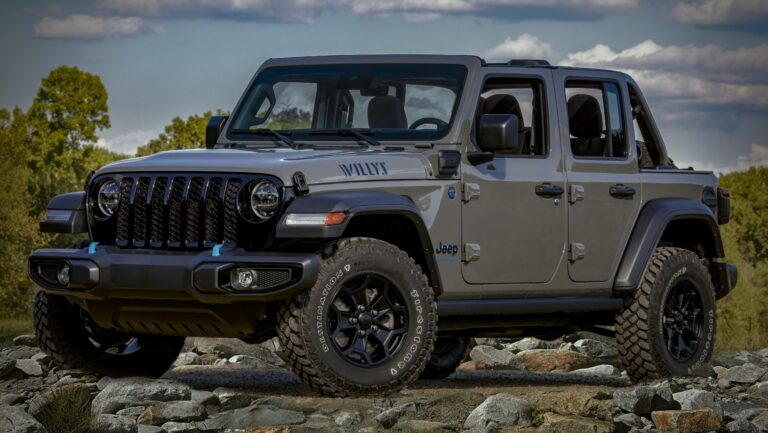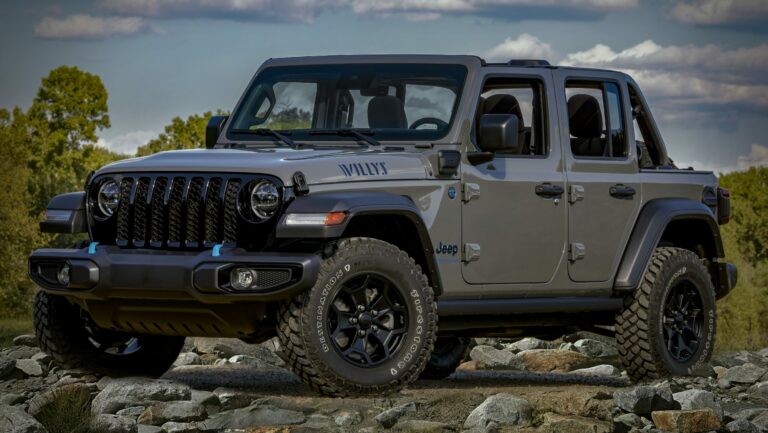2001 Jeep Cherokee Sport XJ For Sale: Your Guide to Owning a Legend
2001 Jeep Cherokee Sport XJ For Sale: Your Guide to Owning a Legend jeeps.truckstrend.com
The automotive landscape is constantly evolving, with new models boasting advanced technology and sleek designs. Yet, amidst this rapid progression, some vehicles defy the odds, retaining their appeal and even growing in cult status years after their production ceases. The 2001 Jeep Cherokee Sport XJ is one such icon. More than just a used car, it represents the culmination of a legendary design, a robust powertrain, and an unyielding spirit of adventure. For enthusiasts and practical buyers alike, finding a "2001 Jeep Cherokee Sport XJ For Sale" isn’t just a transaction; it’s an opportunity to acquire a piece of automotive history renowned for its rugged simplicity, unparalleled off-road capability, and surprising versatility.
This comprehensive guide is designed for anyone considering purchasing or selling a 2001 Jeep Cherokee Sport XJ. We’ll delve into what makes this vehicle so special, what to look for when buying, how to price it, and the practicalities of owning one of the most beloved SUVs ever made.
2001 Jeep Cherokee Sport XJ For Sale: Your Guide to Owning a Legend
Why the 2001 Jeep Cherokee XJ Still Reigns Supreme
The Jeep Cherokee XJ generation, produced from 1984 to 2001, is celebrated for its groundbreaking unibody design, which offered a lighter, more car-like ride without sacrificing the traditional Jeep ruggedness. The 2001 model year holds particular significance as it was the very last year of XJ production, incorporating all the refinements and updates accumulated over its long run.
At the heart of the 2001 Cherokee Sport XJ’s enduring appeal is its legendary 4.0-liter PowerTech inline-six engine. This engine is a masterpiece of durability and simplicity, known for its ability to rack up hundreds of thousands of miles with proper maintenance. Paired most commonly with the robust Aisin-Warner AW4 automatic transmission and the Command-Trac (NP231) or Selec-Trac (NP242) transfer cases, the XJ offers a drivetrain combination that is both reliable and highly capable off-road.
Beyond its mechanical prowess, the XJ’s boxy, no-nonsense design has aged remarkably well, standing out in a sea of increasingly rounded crossovers. Its compact size belies its spacious interior and impressive cargo capacity, making it a surprisingly practical daily driver. Furthermore, the XJ boasts an enormous aftermarket support network, allowing owners to customize, upgrade, and maintain their vehicles with ease, solidifying its reputation as a true enthusiast’s vehicle. The "Sport" trim level typically offered a more basic, rugged interior, making it a popular choice for those who intended to modify their XJ for off-road adventures.
Key Features and Specifications of the 2001 Cherokee Sport XJ
Understanding the core specifications of the 2001 Jeep Cherokee Sport XJ is crucial for any potential buyer or seller.
- Engine: 4.0L (242 cu in) AMC PowerTech I6, producing 190 horsepower and 225 lb-ft of torque. Known for its strong low-end torque, ideal for off-roading. The 2000-2001 models featured a coil-on-plug ignition system, eliminating the distributor and improving reliability slightly.
- Transmission:
- Automatic: Aisin-Warner AW4 4-speed automatic (most common). Extremely durable and well-regarded.
- Manual: Aisin AX-15 5-speed manual (very rare in 2001 Sport models, more common in earlier years).
- Transfer Cases:
- Command-Trac (NP231): Part-time 4WD system, offering 2WD, 4-High Part-Time, and 4-Low. Simpler and very robust.
- Selec-Trac (NP242): Full-time 4WD system, offering 2WD, 4-High Full-Time, 4-High Part-Time, and 4-Low. Adds versatility for varying road conditions.
- Axles:
- Front: Dana 30 reverse cut.
- Rear: Chrysler 8.25 (29-spline, highly desirable for strength) or Dana 35 (less desirable, prone to failure with larger tires). Checking which rear axle is present is important.
- Suspension: Solid front axle with coil springs, solid rear axle with leaf springs. Simple and highly capable off-road.
- Dimensions: Approximately 167 inches long, 70 inches wide, 64 inches high.
- Fuel Economy: Expect 15-18 MPG combined, varying with driving style, modifications, and maintenance.

The Sport trim, in particular, often came with manual windows, basic cloth seats, and a less elaborate interior, making it a lighter and often more desirable starting point for off-road builds or those who appreciate simplicity.
What to Look For When Buying a 2001 Jeep Cherokee Sport XJ
Purchasing a vehicle that is over two decades old requires a meticulous inspection. For a 2001 Jeep Cherokee Sport XJ For Sale, certain areas demand extra attention.
- Rust: This is the XJ’s biggest enemy. Thoroughly inspect the unibody frame rails (especially near the front control arm mounts and behind the rear wheels), rocker panels, floorboards, rear quarter panels (near the wheel wells), and the pinch welds. Surface rust is common, but significant rot is a deal-breaker unless you plan a full restoration. Check around the gas tank skid plate and spring mounts.
- Engine (4.0L I6):
- Leaks: The rear main seal is a common culprit for oil leaks. It’s not usually catastrophic but can be messy and costly to fix. Valve cover gaskets and oil pan gaskets can also leak.
- Coolant: Check for clean coolant (orange or green, depending on what’s used), signs of overheating, or residue around the radiator. A milky substance in the oil filler cap or coolant reservoir could indicate a blown head gasket, though less common on 2001 models (which typically had the updated 0331 cylinder head, though some early 2000-01 models could still have the problematic pre-0331 head if it was a late ’99 casting).
- Noise: Listen for knocking, ticking, or excessive lifter noise. A slight lifter tick is common, but anything loud or persistent could indicate internal wear.
- Idle: Should be smooth and consistent. Rough idle could point to vacuum leaks, sensor issues, or fuel delivery problems.
- Transmission (AW4): Check the fluid color and smell (should be red, not brown or burnt). Test drive to ensure smooth shifts in all gears, no slipping or harsh engagements. Engage 4WD high and low to ensure the transfer case works properly without grinding or binding.
- Suspension and Steering:
- "Death Wobble": A severe, uncontrollable shaking of the front end at speed. This is usually due to worn components like the track bar, tie rod ends, ball joints, or steering stabilizer. Check for play in these components.
- Shocks and Springs: Look for worn or leaking shocks, sagging leaf springs in the rear.
- Bushings: Inspect control arm bushings for cracks or deterioration.
- Brakes: Check for pulsating when braking, grinding noises, or a soft pedal. Look at rotor and pad condition.
- Electrical: Test all lights, power windows (window regulators are a common failure point), door locks, gauges, and HVAC system.
- Interior: Check for torn seats, damaged headliner, cracked dashboard (very common), and overall cleanliness.
- Maintenance Records: Ask for any available service history. A well-documented history indicates a caring owner and can reveal potential issues or recent repairs.
- Pre-Purchase Inspection (PPI): Always, always, always get a pre-purchase inspection from a trusted mechanic who specializes in older Jeeps or 4x4s. This small investment can save you thousands down the road.
Common Modifications and Upgrades
One of the greatest joys of owning a 2001 Jeep Cherokee Sport XJ is the vast world of aftermarket modifications available. Many XJs you find for sale may already have some upgrades.
- Lift Kits: Ranging from 2-inch budget boosts to 6-inch-plus long-arm suspensions. Lifts allow for larger tires and increased ground clearance.
- Tires: Larger all-terrain (A/T) or mud-terrain (M/T) tires are common. Ensure they fit properly without rubbing.
- Bumpers and Armor: Aftermarket steel bumpers, rock sliders, and skid plates protect the vehicle during off-road excursions.
- Winches: Essential for recovery in challenging terrain.
- Lighting: LED light bars, auxiliary lights for improved visibility off-road.
- Axle Upgrades: Swapping out the weaker Dana 35 rear axle for a Chrysler 8.25 or even a Ford 8.8 for increased strength.
- Interior Mods: Upgraded stereo systems, custom storage, or replacement seats.
When evaluating a modified XJ, consider the quality of the work and the components used. Poorly installed modifications can cause more problems than they solve.
Pricing Your 2001 Jeep Cherokee Sport XJ For Sale
The price of a 2001 Jeep Cherokee Sport XJ can vary wildly depending on several factors. There’s no single fixed price, but rather a range determined by condition, mileage, modifications, and location.
- Condition: This is paramount. A rust-free, well-maintained example will command a premium. A rusty project vehicle will be at the bottom of the range.
- Mileage: While the 4.0L engine is durable, lower mileage generally fetches a higher price. However, a high-mileage XJ with meticulous maintenance records can be more valuable than a low-mileage one that’s been neglected.
- Modifications: Quality, desirable modifications (e.g., a professionally installed lift, good tires, winch) can add value. Cheap, poorly installed, or extreme modifications can actually detract from the value for many buyers.
- Maintenance History: A comprehensive service record is a significant asset.
- Location: Prices can vary regionally based on demand and the prevalence of rust (e.g., vehicles from dry climates are often more expensive due to less rust).
- 4WD vs. 2WD: 4WD models are significantly more desirable and valuable.
- Transfer Case (NP231 vs. NP242): While both are good, the NP242 (Selec-Trac) can sometimes fetch a slightly higher price due to its full-time 4WD capability.
Estimated Price Range for 2001 Jeep Cherokee Sport XJ For Sale:
| Condition Category | Mileage Range | Key Factors & Notes | Estimated Price Range (USD) |
|---|---|---|---|
| Poor / Project | 200,000+ | Significant rust, major mechanical issues, neglected, non-running, 2WD often in this range. For parts or full rebuild. | $1,500 – $4,000 |
| Fair / Driver | 150,000 – 250,000 | Minor rust, some mechanical issues (leaks, worn suspension), needs attention but drivable. Decent daily driver or mod platform. | $4,000 – $7,500 |
| Good / Well-Maintained | 100,000 – 200,000 | Minimal rust, strong engine/transmission, recent maintenance, minor cosmetic flaws. Often with tasteful, quality mods. | $7,500 – $12,000 |
| Excellent / Collector | Under 100,000 | Virtually rust-free, pristine interior/exterior, comprehensive service records, often stock or very lightly modified. Rare. | $12,000 – $20,000+ |
Note: These are estimates. Prices can fluctuate based on market demand, specific modifications, and seller urgency.
Tips for a Successful Purchase/Sale
For Buyers:
- Be Patient: Don’t jump on the first XJ you see. The right one will come along.
- Inspect Thoroughly: Use the checklist above. Bring a flashlight and be prepared to get dirty.
- Ask Questions: Don’t hesitate to ask the seller about the vehicle’s history, known issues, and why they’re selling.
- Negotiate: Always negotiate, but be realistic.
- Budget for the Unexpected: Even the best XJ will likely need some immediate maintenance or repairs after purchase. Factor this into your budget.
For Sellers:
- Be Honest: Disclose all known issues, including rust. Honesty builds trust.
- Clean It Up: A clean vehicle presents better and suggests it’s been cared for.
- Document Everything: Gather all maintenance records. Take clear, well-lit photos from multiple angles.
- Highlight the Positives: Emphasize the 4.0L engine, 4WD system, any desirable mods, and recent maintenance.
- Price Realistically: Research similar XJs in your area and price competitively.
Potential Challenges and Solutions
Owning a vintage vehicle like a 2001 Jeep Cherokee Sport XJ comes with its unique set of challenges, but most have straightforward solutions.
- Rust: The most significant challenge. Prevention (undercoating, regular washing in winter) is key. For existing rust, professional repair can be costly, but DIY patch panels or cutting out affected areas are options for those with welding skills.
- Fuel Economy: The 4.0L is robust but thirsty. Expect around 15-20 MPG. Solution: Accept it or consider a smaller, more fuel-efficient daily driver.
- Lack of Modern Safety Features: The XJ lacks airbags beyond the front, ABS is rudimentary, and there are no modern driver-assist systems. Solution: Drive defensively and be aware of your surroundings.
- Maintenance: While parts are abundant and generally affordable, an older vehicle will require more frequent attention. Solution: Embrace DIY if you’re mechanically inclined, or find a trustworthy mechanic specializing in older Jeeps. Joining online XJ forums and groups is an excellent resource for troubleshooting and advice.
- Finding a Good Example: The best XJs are often snapped up quickly. Solution: Set up alerts on sales platforms, network with local Jeep clubs, and be ready to act fast when a good one appears.
Conclusion
The 2001 Jeep Cherokee Sport XJ stands as a testament to practical, rugged automotive design. Its legendary 4.0-liter engine, iconic styling, and immense aftermarket support make it a truly unique and desirable vehicle, whether you’re seeking a capable off-roader, a reliable daily driver, or a fun project. For those looking for a "2001 Jeep Cherokee Sport XJ For Sale," understanding its strengths, common issues, and market value is crucial. With careful consideration and a thorough inspection, you can find a fantastic example of this enduring legend and experience the unbridled spirit of the XJ for yourself. It’s more than just a car; it’s an adventure waiting to happen.
Frequently Asked Questions (FAQ)
Q1: Is the 2001 Jeep Cherokee XJ reliable?
A1: Yes, absolutely. The 4.0L inline-six engine is renowned for its extreme reliability and longevity, often lasting 300,000 miles or more with proper maintenance. The AW4 automatic transmission is equally robust.
Q2: What is the best engine for the XJ?
A2: The 4.0-liter PowerTech inline-six (I6) is the only engine option for the 2001 model year and is widely considered the best and most desirable engine for the XJ platform.
Q3: What’s the typical fuel economy for a 2001 Cherokee Sport XJ?
A3: Expect around 15-18 miles per gallon (MPG) combined, depending on driving conditions, vehicle condition, and any modifications like larger tires or lift kits.
Q4: Are parts readily available for the 2001 XJ?
A4: Yes, parts availability is excellent. Due to the XJ’s popularity and long production run, both OEM and aftermarket parts are widely available and generally affordable.
Q5: Is the XJ good for daily driving?
A5: Yes, many people use XJs as daily drivers. While they lack modern amenities and safety features, their compact size, good visibility, and robust build make them surprisingly practical for everyday use.
Q6: What’s the difference between the Sport trim and other XJ trims?
A6: The Sport trim typically offered a more basic, rugged interior with cloth seats, manual windows (though power windows were an option), and fewer luxury features compared to trims like the Limited or Classic. This simplicity often makes them lighter and more desirable for off-road modifications.
Q7: What are the most common problems to look out for when buying an XJ?
A7: The most common issues include rust (especially on the unibody and rocker panels), rear main seal oil leaks, "death wobble" (due to worn steering/suspension components), and occasional electrical gremlins (e.g., power window motors).
Q8: Is the Jeep Cherokee XJ a unibody or body-on-frame vehicle?
A8: The Jeep Cherokee XJ is a unibody (monocoque) vehicle, which was innovative for an SUV when it was introduced. Despite being a unibody, its construction is exceptionally robust and capable.





